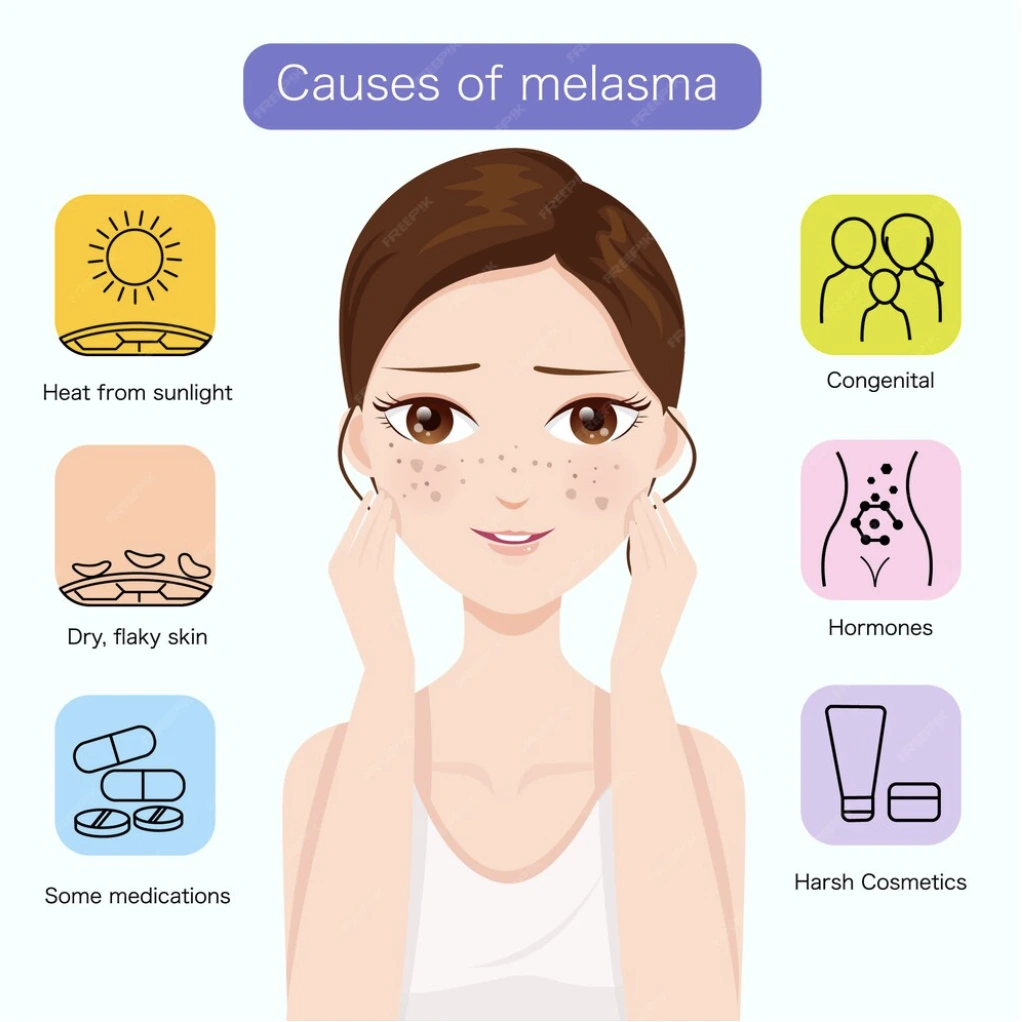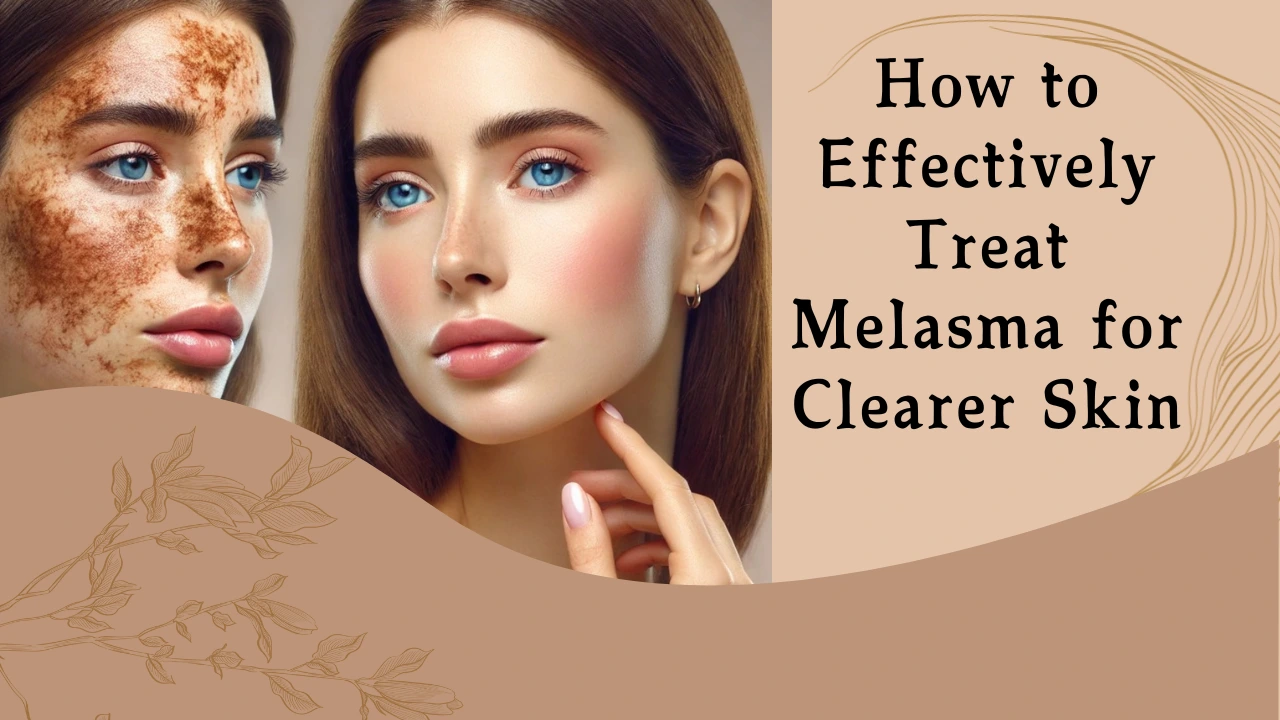Stubborn dark spots on my face! And it won’t go away!!!? Then you may be suffering from melasma. This common skin condition affects millions of people worldwide. But what exactly causes melasma and how can you control it? Let’s unravel the secrets of keeping your skin tone even and glowing.
What is Melasma?
Melasma is a skin condition characterized by dark, discolored patches, typically appearing on the cheeks, forehead, nose, and upper lip. It’s more common in women, especially those with darker skin tones, and often worsens with sun exposure. While melasma is harmless, it can be frustrating to deal with due to its persistent nature.
What Causes Melasma?
Understanding the root causes of melasma is the first step in managing it effectively. Several factors contribute to its development:

1. Sun Exposure – The Biggest Culprit
Sunlight stimulates melanin production, which can worsen melasma. Even a few minutes of unprotected sun exposure can trigger or darken existing patches. That’s why sunscreen is non-negotiable for anyone dealing with this condition.
2. Hormonal Changes – The “Mask of Pregnancy”
Melasma is closely linked to hormonal fluctuations. Pregnancy, birth control pills, and hormone therapy can all trigger excess melanin production. This is why many women develop melasma during pregnancy, earning it the nickname “mask of pregnancy.”
3. Genetics – A Family Affair
If your parents or siblings have melasma, you might be more likely to develop it. Genetics play a significant role in determining who is more susceptible to this skin condition.
4. Skin Irritation – A Hidden Trigger
Harsh skincare products, excessive exfoliation, or strong chemical treatments can irritate the skin, leading to increased melanin production. If you have sensitive skin, using gentle, soothing skincare products is essential.
How to Treat Melasma
The good news is that melasma can be managed with the right treatments and lifestyle adjustments. Here are some effective options:
1. Topical Treatments – Your First Line of Defense
Applying specific serums and creams have the potential to help minimize melasma, and the ingredients in them include the following:
- Hydroquinone – A skin-lightening agent that reduces pigmentation.
- Tretinoin & Corticosteroids – Help speed up cell turnover and fade discoloration.
Melumin Depigmenting Anti-Dark Spots Concentrated Night Cream is specially formulated to minimize melasma. It contains MELUMIN Tristage, an active complex developed by the Dermedic Research and Development Center, to effectively reduce melasma. All Melumin formulations have been clinically tested on sensitive skin.
2. Chemical Peels & Laser Therapy – For Stubborn Cases
If topical treatments do not work, your dermatologist may recommend the following:
- Chemical Peels – exfoliates the top layer of skin for a fresher, more even skin tone.
- Laser Treatment – targets and breaks down excess pigment, but must be handled carefully to avoid irritation.

3. Sun protection – The Most Important Step
Sun exposure can aggravate melasma. Wearing a hat and seeking shade can help. It is also vital to use a broad-spectrum sunscreen (SPF 30 or higher) every day.
Sunbrella Sun Protection Cream by Dermedics is dermatologist-recommended to protect the skin from UV radiation and prevent hyperpigmentation while moisturizing the skin!
Final Thoughts: Can Melasma Be Cured?
While melasma isn’t always curable, it can be effectively managed with the right skincare, sun protection, and professional treatments. Patience is key—results take time, but consistency will pay off.
If you’re struggling with melasma, consult Klinik Finesse to find the best treatment for your skin type. And remember, glowing, healthy skin is always there—so protect it, care for it, and embrace your natural beauty!















